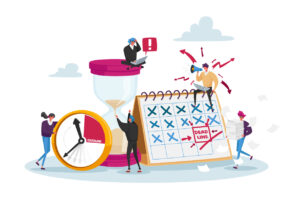Communications plays a key role in normalizing mental health at work
Here’s why agencies and in-house teams should consider adopting ‘sad days’ in addition to sick days.

Although we’ve made tremendous progress in addressing mental health in the workplace, there is so much work ahead.
Organizations have taken action with new policies, including implementing company-wide mental health PTO days to address burnout and meeting-free Fridays. But employees are still struggling. Recent data from Talkspace found more than half of American employees reported experiencing burnout and 41% are likely to consider a job change to resolve stress.
If we truly want to change the conversation around mental health within our companies, we have to adopt new language and ways of communicating with employees to remove the stigma and encourage positive discussions around wellness.
Communications professionals have a unique opportunity to affect meaningful change when it comes to mental health. Here are three areas where comms professionals can make the biggest impact:
1. Normalize mental health into everyday work.
As COVID changed our world, we’ve seen many companies embrace “mental health” or “wellness” days for their employees. Adam Grant, in a recent podcast took it a step further, calling for employers to adopt “sad days” in addition to sick days and mental health days. While this isn’t something all companies might be ready to do, what’s great about this challenge from Grant is that it sparks a conversation around language and its importance in setting tone and changing culture (something we marketing and PR professionals are always thinking about).
It led to a great conversation among our team at Vyond, where we encourage employees to share more authentic, out-of-office messages that say you’re taking a mental health day and accompanying that simple text with a fun GIF or video. By encouraging employees to say they are taking a “sad day” or a “mental health day,” we normalize what was always normal—and as comms professionals we play a part in sharing that message and changing the language.
2. Use an integrated communications approach.
As companies and employees constantly chat with one another across multiple platforms, a single email or Slack message no longer holds employee’s attention. That certainly applies to how you communicate around wellness.
Experimenting with different mediums like audio or video can help communicators stand out above the noise. In fact, my team recently surveyed full-time employees and found that more than half of respondents prefer to watch or listen to a company announcement or communication instead of reading an email or blog post, a testament to the power of dynamic media better engaging audiences and helping content stick with them for longer.
That could mean sending out a companywide video message from your leadership team sharing their own personal tips on how they avoid burnout, accompanied by a blog post with additional resources.
While internal comms channels like email, Slack, Teams and even social media platforms are helpful in communicating with employees, adding a new communication layer like video could be just the thing to keep your audience involved in the conversation.
3. Create a process for obtaining feedback.
It’s time to embrace an “open door” policy to communications, especially when it comes to mental health. Those creating and distributing internal comms materials must be open and willing to receive feedback from employees and be flexible to accommodate changing employee preferences and needs.
Being constantly aware of how messages are received among teams can help company leaders and PR professionals evolve their communications approach to better fit the needs of their employees. Leaders can do this through an anonymous feedback portal or survey to gauge what kinds of wellness content and programming employees would like to see. As PR professionals know, the best decisions are those informed by the people that they impact.
The workplace is evolving and so is the way we communicate with our teams. It is critical that comms leaders set the standard for communicating around mental health for the future workplace.
Stacy Adams is dedicated to helping companies build better communication and trainings as part of her role at Vyond.







Reading this article provided essential information about mental health in the workplace. The normalization of mental health at work is a vital and progressive conversation that needs to be had amongst teams. The combination of mental health normalization with communication is an interesting yet important pair that ties together through the acceptance and support of one’s team. I agree that having an open line of communication with coworkers is one of many significant factors that can lead to improved employee mental health. The evolution of communication within teams can be used to aid in employee mental health.
-Evvy Lusco/ writer/editor for Platform Magazine